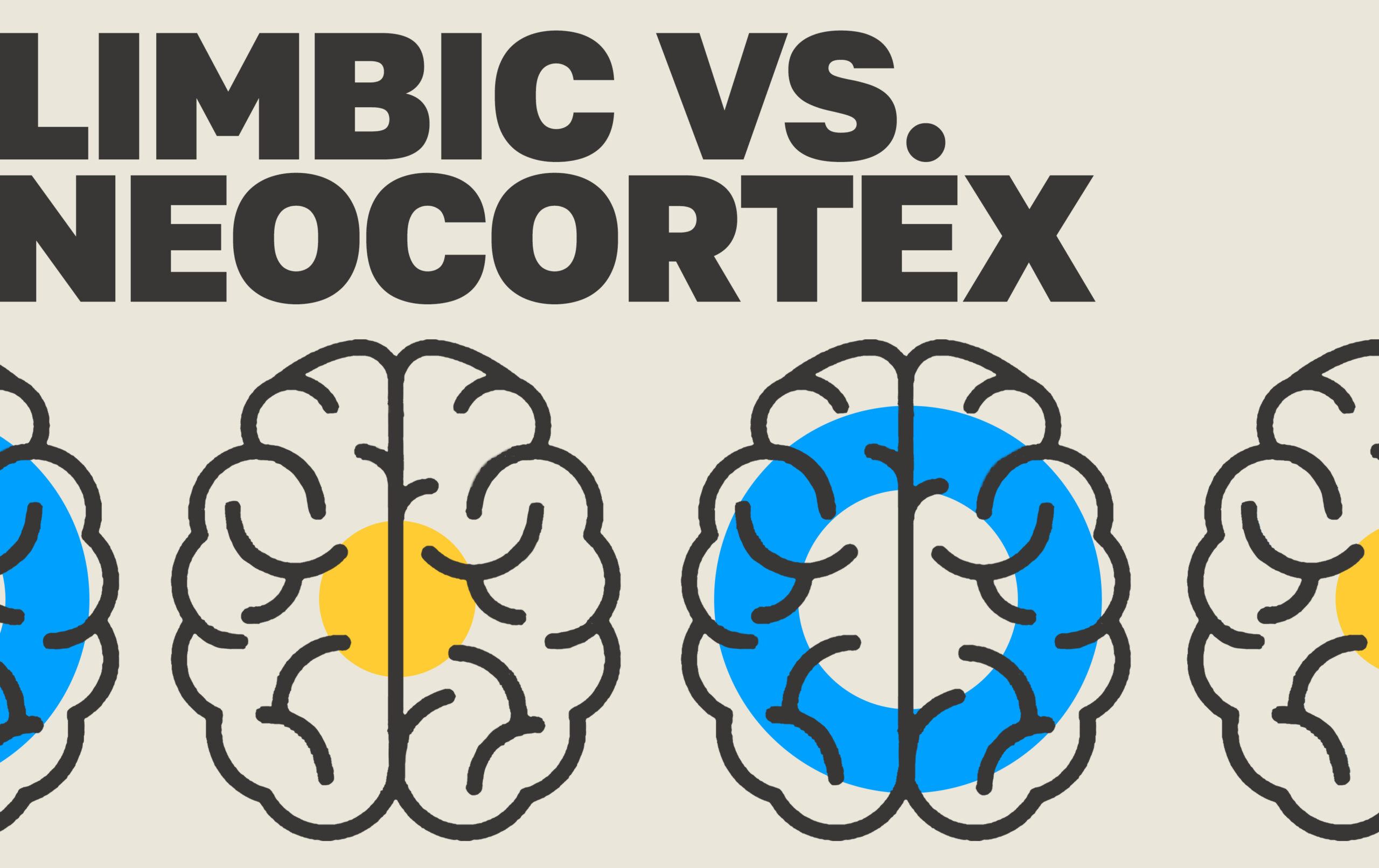
If you’re only talking to your customer’s logical brain, you’re losing before the conversation even starts.
Most business leaders believe sales are a logical transaction. We think customers meticulously weigh features, compare prices, and then make a rational decision based on a checklist of benefits.
That’s what we want to believe. It makes our job feel logical and predictable. But what if that’s only half the story—and the less important half, at that?
The reality is: sales are driven by emotion and justified by logic.
Let’s talk science for a second.
Our brains have two key parts at play here:
The Neocortex
It’s responsible for rational, analytical, and logical thought. This is where we process facts, figures, and benefits. It’s where your customer goes to justify a purchase.
The Limbic System
It’s responsible for emotions, feelings, and instincts. This is where your customer goes to make a purchase.
Here’s the catch: The Limbic System has no capacity for language. It doesn’t process words. It processes feelings. It’s where gut feelings and trust live. It decides whether to buy from you, and then the Neocortex swoops in afterward to rationalize that decision with features and data.
This is why we see so many mission statements that fall flat. We’re talking about what we do—our features and benefits—hoping to appeal to the logical part of the brain. But the decision has already been made in a place where words can’t go.
Think about a company like USAA. They don’t just sell insurance. Their message, “We know what it means to serve,” speaks to a deeper feeling of shared sacrifice and loyalty. They’re talking directly to the limbic system of military families. This emotional connection is why they have an astounding 97% customer retention rate. They don’t just have loyal customers; they have people who feel a deep connection.
Your purpose, your “why,” is your secret weapon. It’s what allows you to bypass the logical debate and speak directly to the emotional core of your customers. When you articulate your core problem and your core belief, you are creating a feeling—a shared conviction—that resonates before a single feature is discussed.
If you’re a marketing leader, your job isn’t just to list the facts. It’s to create content and a brand that sparks a feeling. It’s about telling a story that resonates with their purpose, so their limbic system says, “Yes, I believe in this company.” Only then will their neocortex come in to say, “The price is right, and the features are good.”
Stop trying to win with just logic. Start with heart.
That’s how you build a connection that outlasts any competitor’s price point and earns long-term loyalty.
So What Do We Do About This?
That’s the part that gets lost in a lot of conversations about purpose. It’s a great idea, but how do we actually do it? How do we build a brand that speaks to the heart, not just the head?
This isn’t something you can just “do better.” It’s a fundamental shift in how you build and communicate your brand. It starts with asking the hard questions about your business, the ones that dig deep into your Core Problem and your Core Belief. From there, you can craft a purpose statement that has the emotion, uniqueness, and focus required to activate your entire brand.
That’s why we developed the Ovrflo process. It’s our proven blueprint for moving from a stale, logical brand to a purpose-powered one that is ready to win. It’s how we help companies clarify their unique message, infuse it into their branding, and ensure it builds the emotional connections that drive sales and loyalty.
You can’t just slap a new tagline on a flawed foundation. You need a system that builds a brand from the inside out—one that’s designed to connect with the heart first.
That’s how you build a connection that outlasts any competitor’s price point and earns long-term loyalty.

